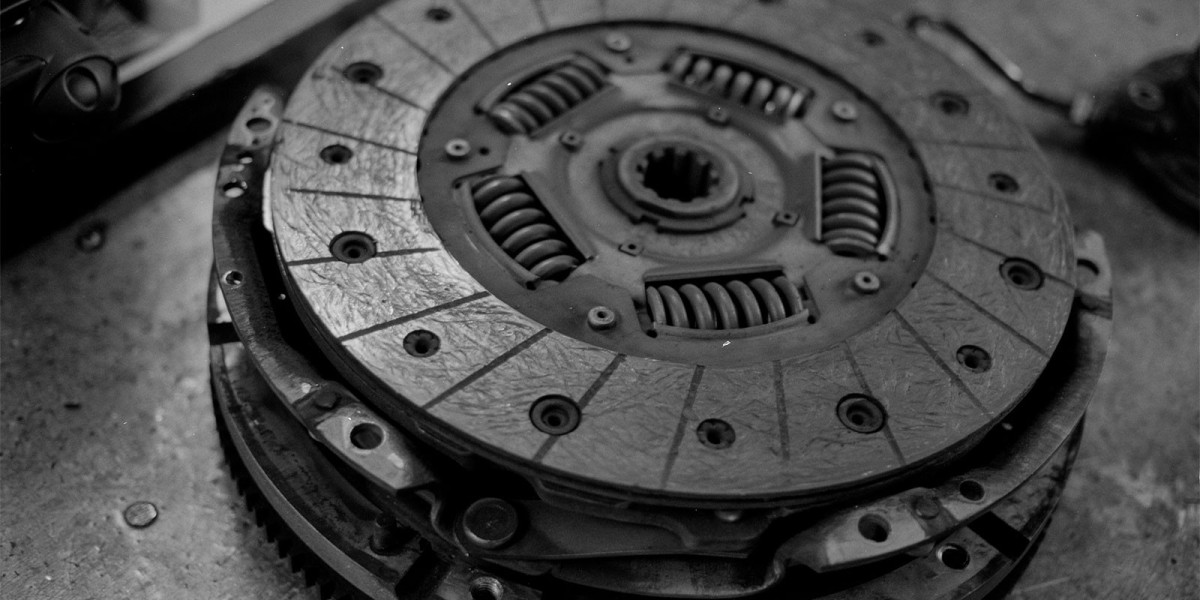The automotive clutch is a vital component in manual transmission systems, enabling drivers to engage and disengage the engine from the transmission. This mechanism allows for smooth gear shifts, providing control over vehicle speed and power delivery. This article examines the functions, types, components, and technological advancements of automotive clutches, as well as their significance in modern vehicles.
How Automotive Clutches Work
An automotive clutch operates on the principle of friction, allowing the driver to connect or disconnect the engine's power to the wheels. The primary components involved in clutch operation include:
Clutch Disc: The friction surface that engages with the flywheel to transfer power from the engine to the transmission.
Flywheel: Attached to the engine, it provides a surface for the clutch disc to engage and helps smooth out engine vibrations.
Pressure Plate: Applies pressure to the clutch disc, ensuring a firm connection with the flywheel when engaged.
Release Bearing: Allows the driver to disengage the clutch by pushing against the pressure plate when the clutch pedal is pressed.
Clutch Pedal: The interface that the driver uses to engage or disengage the clutch.
Functions of Automotive Clutches
The primary functions of automotive clutches include:
Engagement and Disengagement: Clutches allow the driver to smoothly engage and disengage the engine from the transmission, enabling gear changes without stalling the engine.
Power Transfer: When engaged, the clutch transmits power from the engine to the transmission, allowing the vehicle to move.
Smooth Gear Shifts: Clutches enable drivers to change gears seamlessly, providing a smoother driving experience.
Shock Absorption: The clutch system helps absorb engine vibrations and shock loads, protecting the drivetrain components.
Types of Automotive Clutches
There are several types of automotive clutches, each designed for specific applications:
Friction Clutch: The most common type, utilizing friction materials on the clutch disc to engage and disengage. It can be further divided into:
- Single Plate Clutch: Consists of one clutch disc and is widely used in passenger vehicles.
- Multi-Plate Clutch: Contains multiple discs for increased torque capacity, commonly used in high-performance and racing applications.
Hydraulic Clutch: Utilizes hydraulic fluid to engage and disengage the clutch, providing a lighter pedal feel and more precise control.
Electromagnetic Clutch: Uses electromagnetic forces to engage and disengage the clutch, often found in automatic transmissions and hybrid vehicles.
Ceramic Clutch: Designed for high-performance applications, using ceramic materials for improved heat resistance and durability.
Benefits of Automotive Clutches
The implementation of automotive clutches offers several advantages:
Control: Clutches provide drivers with control over power delivery and gear selection, enhancing the driving experience.
Durability: Quality clutches are designed to withstand high levels of stress and heat, ensuring longevity and reliability.
Performance: High-performance clutches can improve acceleration and responsiveness, making them ideal for racing and performance vehicles.
Versatility: Different types of clutches can be tailored to specific vehicle applications, from everyday commuting to high-performance racing.
Technological Advancements
Recent innovations in automotive clutch technology include:
Advanced Friction Materials: The development of new friction materials enhances durability, heat resistance, and performance, improving overall clutch efficiency.
Smart Clutch Systems: Integration of electronic control units (ECUs) allows for precise control of clutch engagement and disengagement, optimizing performance and fuel efficiency.
Lightweight Designs: Manufacturers are focusing on reducing the weight of clutch components, which can enhance vehicle performance and fuel economy.
Self-Adjusting Clutches: These systems automatically adjust the clutch engagement point, improving drivability and reducing maintenance needs.
Market Trends
The automotive clutch market is experiencing significant trends that shape its future:
Growing Demand for Manual Transmissions: Despite the rise of automatic transmissions, there is still demand for manual transmissions in performance and enthusiast vehicles, driving the need for advanced clutch systems.
Focus on Electric and Hybrid Vehicles: The shift towards electric and hybrid vehicles is leading to the development of specialized clutch systems that cater to new powertrain architectures.
Sustainability Initiatives: Manufacturers are increasingly prioritizing eco-friendly materials and production processes, contributing to the overall sustainability of automotive components.
Aftermarket Opportunities: The growth of the performance aftermarket is driving demand for high-performance clutches, with enthusiasts seeking upgrades for better performance.
Challenges and Solutions
Despite advancements and trends, several challenges persist in the automotive clutch industry:
Wear and Tear: Clutches are subject to wear over time, leading to potential performance issues. Regular maintenance and quality materials can help mitigate this problem.
Heat Management: High-performance applications generate significant heat, which can lead to clutch failure. Improved cooling systems and materials are essential for managing heat.
Cost Considerations: Advanced clutch systems can be more expensive to manufacture. Finding cost-effective solutions while maintaining quality is a challenge for manufacturers.
Future Prospects
The future of automotive clutches looks promising, with several trends expected to shape the industry:
Integration with Autonomous Driving Technologies: As vehicles become more autonomous, clutch systems may need to adapt to new driving paradigms and control systems.
Advancements in Material Science: Ongoing research in materials will likely lead to even more durable and efficient clutch systems.
Customization Options: The demand for personalized vehicle performance will drive the development of customizable clutch solutions for various driving styles and preferences.
Enhanced Diagnostics: Future clutch systems may incorporate advanced diagnostic capabilities, providing real-time feedback on performance and maintenance needs.
Automotive clutches are essential components that enable smooth power transfer and control in manual transmission systems. With ongoing advancements in technology and a growing emphasis on performance and sustainability, the future of automotive clutches is bright. As manufacturers continue to innovate and address challenges, clutches will play a crucial role in enhancing the driving experience and vehicle performance.






